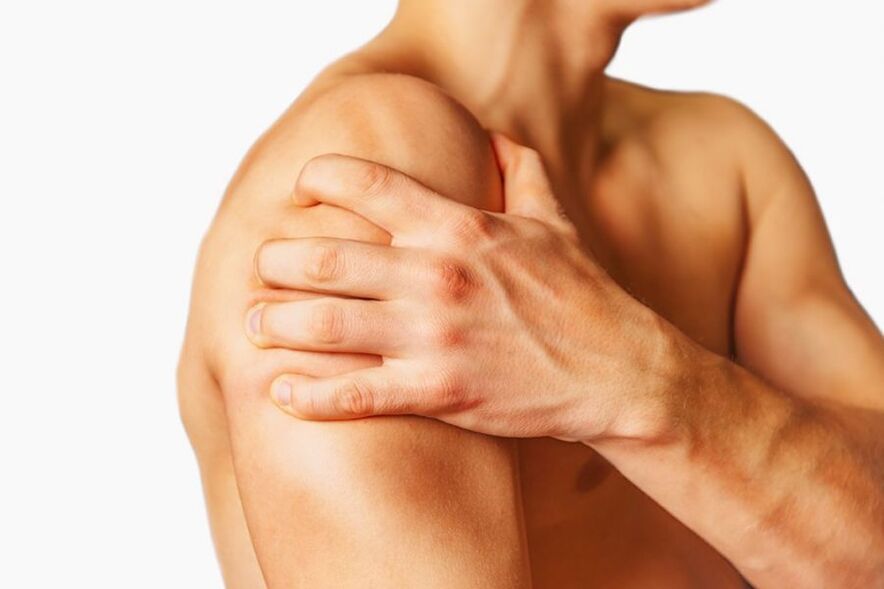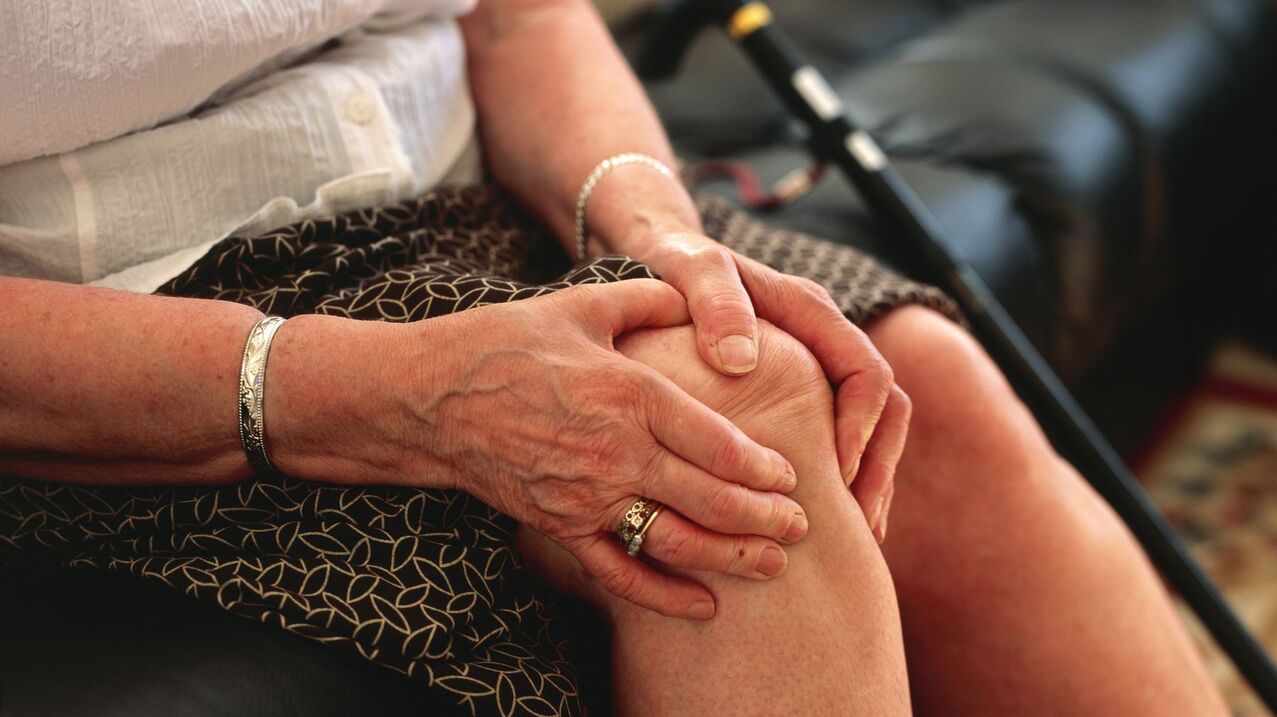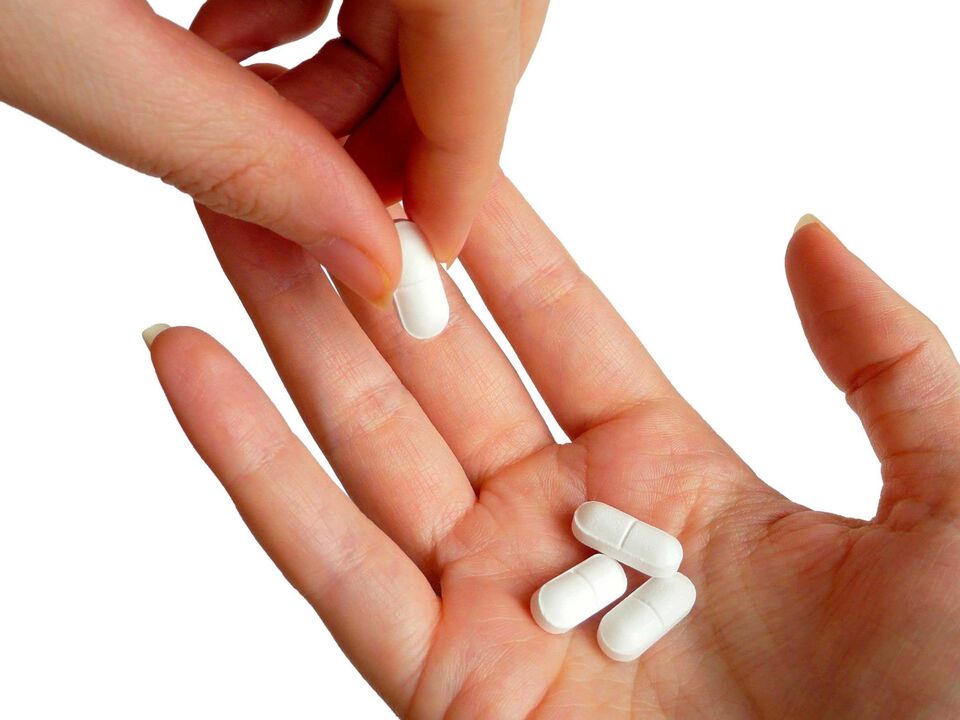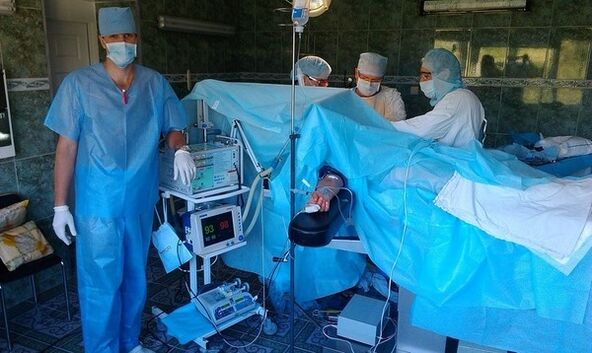
Arthropathy can affect any joint, and the changes in degenerative dystrophy can be isolated or can occur in multiple joints at the same time.
This pathology is not life-threatening, but it will significantly reduce its quality. Over time, severe pain and restricted mobility will increase, leading to disability.
In the early stages, conservative treatment is prescribed, which helps prevent the development of the disease.
Deformed osteoarthritis (DOA) is difficult to cure completely, but it can preserve the function of the bone connection. In the later stages, only surgical treatment will help.
Development mechanism
Many people have heard of diseases like joint disease, but not everyone knows what it is. For this, you need to understand how joints work.
The surface of the bones that form the joints is covered with smooth, sliding, and elastic cartilage, which cushions and protects them from damage. With arthropathy, the blood supply to this area is interrupted and hyaline cartilage begins to deteriorate. In addition, the joint capsule, ligaments, muscles around the joints and other joint segments will undergo degenerative dystrophy changes.
Usually the disease develops slowly, but under the influence of external factors, the pathological process will accelerate. To a large extent depends on the patient's physical characteristics, comorbidities, and lifestyle.
Osteoarthritis develops in this way:
- The blood circulation in a certain area of the articular cartilage is impaired, and then it begins to lack nutrients. Under the influence of traumatic factors, the damage area increased.
- The body replaces defects in the articular cartilage lining with mineralized tissue, and the mineralized tissue does not have a clear structure.
- Gradually, pathological growths (osteophytes) appear on the clear coating.
- In the context of the pathological process, the healthy areas of cartilage are over-stressed. As a result, the work of the joint is destroyed, and its surface is gradually destroyed.
careful!Arthropathy causes destruction of the surface of the joint bone, inflammation of the synovial membrane, and compaction of the joint capsule. The joint space becomes narrow, the joint deforms and breaks, and then the patient becomes disabled. Therefore, it is very important to diagnose and start treating the pathology in time.
Usually, joint disease is detected in patients over 60 years of age. However, this disease is also diagnosed at a young age-from 20 to 45 years old.
refer to. Arthritis is similar to joint disease, so many patients are interested in the question of how the first disease is different from the second disease. DOA only damages joints. Arthritis is characterized by inflammatory damage not only to bone junctions, but also to internal organs (liver, kidney, heart). This is the main difference between these pathologies.
Classification
People who are far from medicine do not understand the difference when they hear names such as knee joint disease, hip joint disease, and osteoarthritis. In fact, there are many types of this pathology, with different locations, course specificities, causes, and origins. Therefore, doctors have created several classifications of joint diseases to make it easier to distinguish them.

Types of arthropathy classified by location:
- Knee arthropathy is a pathological process of the knee joint.
- Hip arthropathy is a pathology of the hip joint.
- Uncovertebral-Deformity of the cervical spine.
- Dystrophic changes in the shoulder joint.
- Interphalangeal joints-the deformation of the interphalangeal joints of bones.
- Spondyloarthropathies are degenerative changes in the joints of the spine.
- Ankle-worn on the ankle joint.
- Polyarthritis is multiple lesions of finger joints.
In addition, there are jaw, temporal bone, vertebrae, clavicle-acromial joint disease.
According to the characteristics of the course, the following types of pathology can be distinguished:
- Osteoarthrosis is a disease that has entered the third stage. This is a progressive disease that requires immediate surgery.
- Arthropathy-arthritis-destruction of the cartilage lining, inflammation.
- An acute disease in which the characteristic symptoms become more pronounced.
- Chronic joint disease is a slow destruction, the cartilage lining becomes thinner, and the course of the disease disappears.
According to the reasons, it is divided into:
- Dystrophic osteoarthritis-occurs due to metabolic disorders.
- Fracture arthropathy-developed due to fractures.
- Post-traumatic-disease appears after a joint injury.
DOA varieties by origin:
- Primary (idiopathic)-Occurs for no apparent reason, usually due to age-related bone and joint changes.
- Secondary-Degenerative malnutrition can cause many factors (metabolic disorders, hormonal imbalances, trauma).
The doctor distinguishes between single joints and multiple joints. In the first case, 1 joint is affected, in the second case, all joints are destroyed at the same time. The last disease is called systemic arthropathy, in which 3 or more bones and joints are deformed.
Pathology degree
According to symptoms and progress, DOA is divided into 4 stages:
- 1 degree.The shape and structure of the joints have not changed, so the disease has a latent course. Patients sometimes feel mild discomfort in the affected area, especially after excessive physical exertion or sudden exercise. The composition of the synovial fluid changes, and the blood supply to the joints is interrupted. The muscle fibers around the joints are weakened.
- level 2.Bone joints begin to collapse, forming bone growth on their surface. There is moderate pain and inflammation occurs periodically. During exercise, the affected joints will make a characteristic crunching sound. As the nutrition of nerve tissue is disturbed, muscle function will be reduced.
- 3 degrees.Hyaline cartilage and joints have obvious degenerative diseases, so the limb axis is bent. The ligaments and muscles are shortened, and the joints have pathological movement, but the movement is obviously restricted. Patients often have incomplete dislocations.
- 4 degrees.The bone connection is completely destroyed, complete immobility is observed, and severe pain syndrome can occur even when resting.

important. In the final stage of joint formation, only an endoprosthesis will help (replace the affected joint with a prosthesis).
Reasons for DOA
The question of why this disease occurs is very relevant. Doctors distinguish between internal causes (certain diseases, bad habits, unhealthy diet) and external causes (injuries, occupational activity characteristics) of osteoarthritis.
Secondary degenerative dystrophy usually develops in the context of the inflammatory process:
- Infectious diseases that cause various viruses and bacteria.
- Rheumatism.
- Autoimmune diseases.
- Purulent inflammation of the joints.
- Gout (the deposit of urate on the surface of the bone).
- Joint psoriasis.
DOA can occur due to abnormal cartilage structure and malnutrition. Pathological changes are caused by the following factors:
- Genetic disease.
- Pathology that occurs during development in the uterus.
- Age-related physical changes.
- Osteoporosis (increased bone fragility due to calcium deficiency).
- hormone imbalance.
- Disorders of metabolic processes.
- Lack of vitamins and minerals.
- Pathology accompanied by muscle weakness.
- Long-term poisoning.
The deterioration of musculoskeletal diseases can also cause degenerative changes in cartilage tissue.
External factors that contribute to the development of joint disease include:
- Periodic hypothermia.
- dislocation.
- A huge force impacts the joint area.
- fracture.
- The meniscus is damaged.
- Excessive physical activity related to professional sports or professional activities.
- obesity.
- Surgery on joints or structures around joints.
Regardless of the cause of DOA, it is important to first determine the cause of the pathological changes and then treat the consequences.
refer to.Idiopathic joint disease occurs spontaneously without obvious cause.
symptom
Arthropathy is manifested by the following symptoms:
- Pain syndrome;
- Liquidity restrictions;
- Crunching when moving;
- Edema, changes in the connecting axis.
These are characteristic symptoms that all patients will experience.

The first sign of pathology is discomfort in the affected area, which occurs after physical exertion. After discomfort, you should consult a doctor, because the disease can be cured at an early stage.
Later, the patient complained of mild to moderate pain after the injured joint was weight-bearing, and it disappeared quickly.
The reduced mobility of the bone junction indicates a degenerative change in its structure. At first, the patient will feel stiffness, especially in the morning. Later, it became more and more difficult for patients to exercise actively. With further development, even with additional help, there will be movement restrictions. If left untreated, joint contractures will occur, and over time, their movement will be blocked.
Many patients complain of crunching joints during exercise, accompanied by pain and decreased mobility. As the disease progresses, this manifestation becomes more pronounced.
In the later stage, the limb axis is bent and the joint membrane is deformed. This indicates that the bone connection has actually collapsed and the healthy tissue has been replaced by osteophytes. At this stage, the adjacent joints will receive strong pressure, so the possibility of damage to their cartilage lining will increase.
Establish a diagnosis
If you find signs of osteoarthritis, seek medical attention immediately. The diagnosis of DOA is confirmed after medical history, laboratory and instrumental research.
First, perform a visual inspection, during which the doctor may notice swelling in the affected area. In addition, palpation allows you to determine skin soreness, nodules, temperature and moisture changes.
Comprehensive diagnosis involves laboratory research. Blood tests can reveal the inflammatory process, which is manifested by an increase in ESR (erythrocyte sedimentation rate) and an increase in uric acid concentration. Do a urine test to determine the protein level.
Use the following instruments to research and diagnose joint disease:
- X-rays help to see changes in the shape of joints.
- Arthrography using contrast agents is a more accurate diagnostic method than X-rays.
- CT is used to assess the structure of joints.
- The use of radiopharmaceuticals for radionuclide diagnosis. This study allows you to assess the anatomical and functional status of the connection.
Magnetic resonance imaging is a modern and highly information-based diagnostic method. During the inspection, the deformation of the damaged joint, the meniscus or the rupture of the ligament can be seen.
To check the synovial fluid, the doctor will perform a puncture on the affected limb.
After the diagnostic measures, the doctor formulates a treatment plan.
treatment method
For any stage of joint disease, medical care is required. Early comprehensive treatment helps prevent pathological changes and restore joint function. If the patient seeks medical attention in the late DOA, the prognosis is poor.

For 1st-degree joint disease, medication is given. Cartilage protective agents are used to restore the structure of the cartilage lining. Prescribe medications in the form of pills and capsules to patients. They need to attend courses for 3-4 months twice a year. The drug contains structural elements of the cartilage lining.
Non-steroidal anti-inflammatory drugs (pills, injections) help relieve pain.
DOA treatment using physical therapy methods:
- Magnetic therapy.
- UHF therapy.
- Electrophoresis.
- Shockwave therapy.
- Paraffin therapy.
- Mud treatment.
After the pain disappears, perform physical therapy and physical therapy exercises. The doctor has developed a set of exercises that the patient must perform systematically. Exercise therapy can increase muscle tone, strengthen ligaments, normalize blood circulation, and help restore joints.
During and after treatment, it is recommended to rest and relieve the load on the diseased joint with the help of bandages, crutches and canes.
Sometimes, the patient will be asked to massage. After a course of surgery, the blood supply to the affected area is improved and the pain is alleviated.
During treatment, the patient must eat correctly. You should quit sugar, flour, fat, spicy food, potatoes, tomatoes, and eggplants. And it is recommended to always get rid of bad habits (alcohol, smoking).
For arthropathy, use intra-articular injections:
- Glucocorticoids help normalize the blood supply to the affected area, stop the inflammatory process, and increase the elasticity of bone tissue.
- Synovial fluid analog with chondroprotective properties. These drugs can reduce pain, improve joint mobility, and accelerate the production of collagen and elastic fibers.

In the final stage of DOA, surgical treatment is used:
- Endoprosthesis.
- Arthrodesis.
- Arthroscopy.
In advanced cases, doctors replace damaged compounds with metal prostheses. In most cases, this method is used to treat large joints. After the operation, the patient's quality of life improved.
If arthrodesis cannot be performed, switch the arthrodesis to the patient. During the operation, the bone surface is fixed with a special plate. Arthrodesis can help relieve severe pain, but it cannot restore joint movement.
During arthroscopy, miniature cameras and manipulators are introduced into the joint cavity. With the help of this, bone growth is removed and cartilage structure is restored. The camera allows you to monitor all operations on the screen. Usually, this operation is performed for gonorrhea, but its effect is short-lived.
DOA is dangerous, so timely identification and treatment are very important.
Comment
According to patients who have encountered arthropathy, it is the easiest to cure the disease early. In advanced cases, only surgery will help. But in both cases, treatment should be comprehensive.
- The first comment: "I was diagnosed with second-degree knee joint disease a year ago. I took special medications, received physical therapy, and diet. At first, the pain disappeared and my mobility was restored, but within 3-4 monthsThe symptoms reappeared later. Sometimes the pain is accompanied by an increase in body temperature. The doctor advised me to take capsules containing hondoprotectors. With them, my condition has improved and I have not felt any pain for six months. "
- Second comment: "A few years ago, I was diagnosed with grade 3 hip joint disease. I have been in pain, and my legs cannot move normally even at night. The doctor suggested that I have an operation, but at first I refused and decidedTried intra-articular injection. However, my situation did not change much after the operation. As a result, I decided to adopt a radical approach. After implanting the prosthesis, she recovered for 1 year and 3 months. During this period, She takes drugs, special exercises, massages, physiotherapy, and diet. Now I lead a fulfilling life. I advise everyone not to hesitate to treat. "
- Third comment: "I was diagnosed with a ruptured inner meniscus of the knee and grade 1 gonorrhea after MRI. The doctor prescribed a cartilage protectant. I also use ointment twice a day. To protect my knee, I used an orthosis. I only took it off when I was resting at home. After the injection treatment, I started electrophoresis and paraffin treatment. I also bought a magnetotherapy instrument, which has been treated for 10 times. After the diagnosis, the doctor said that the joint has recovered 70%. IContinue the treatment and hope that my leg will fully recover. "
As you can see, there are different types of joint disease. To avoid surgery and restore joint function, you need to seek medical help when there are suspicious signs. Only a doctor can determine the type and complexity of the disease and formulate an effective treatment plan. DOA is easier to treat in the early stages.















































